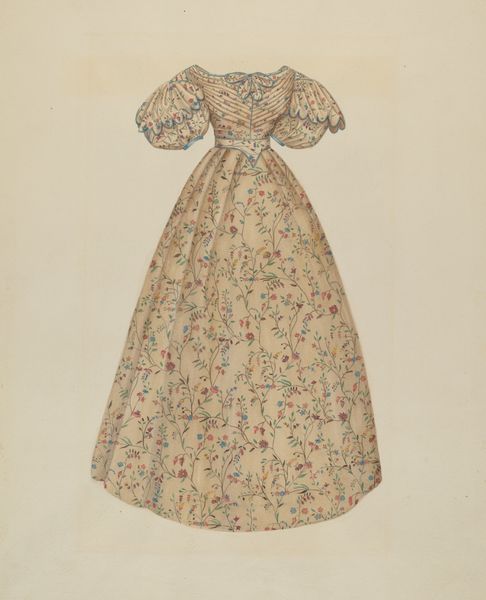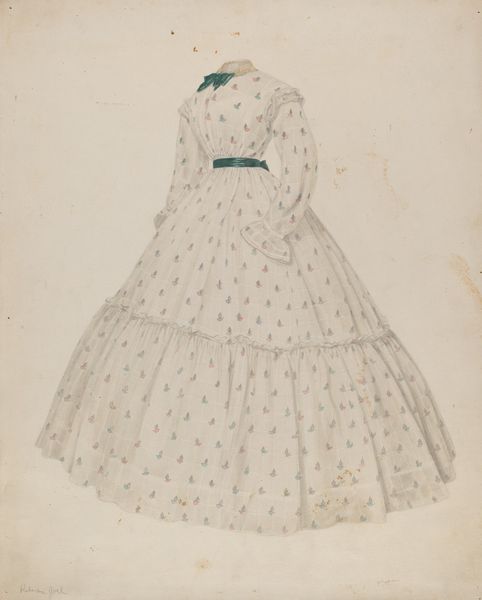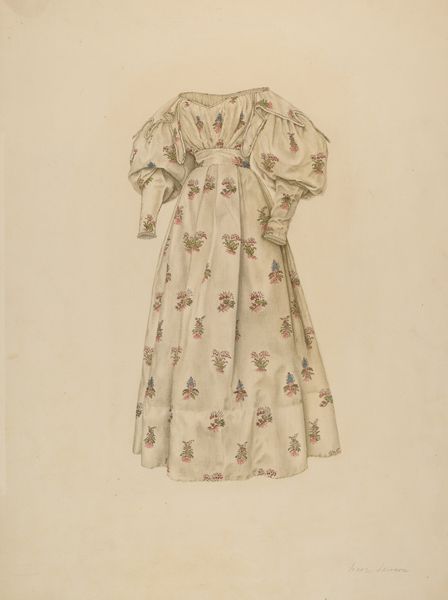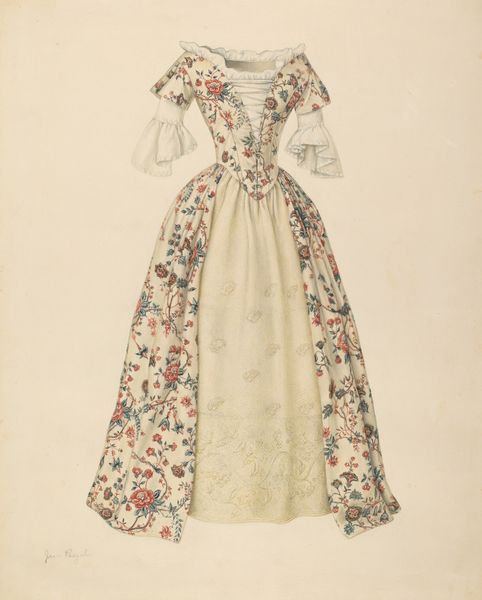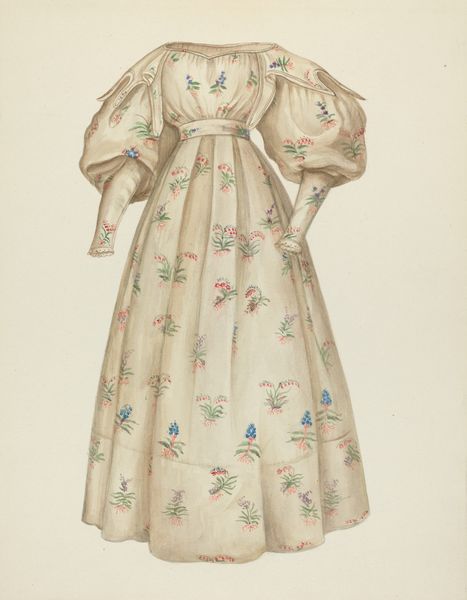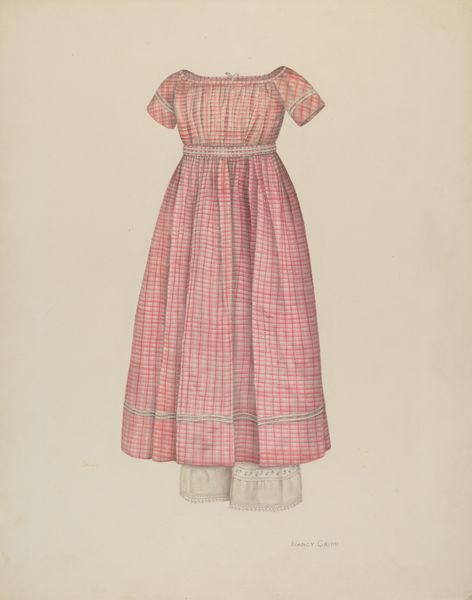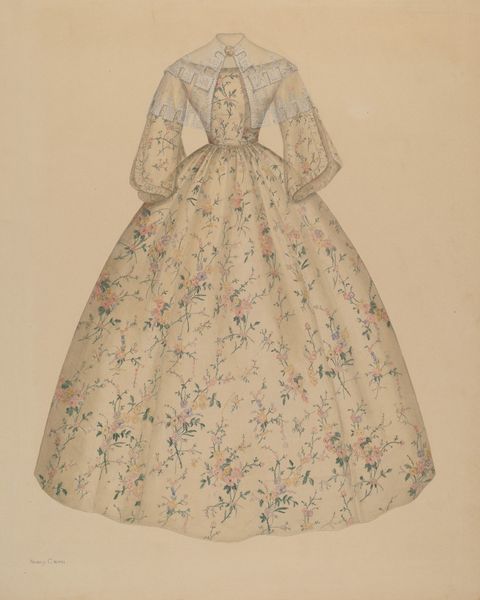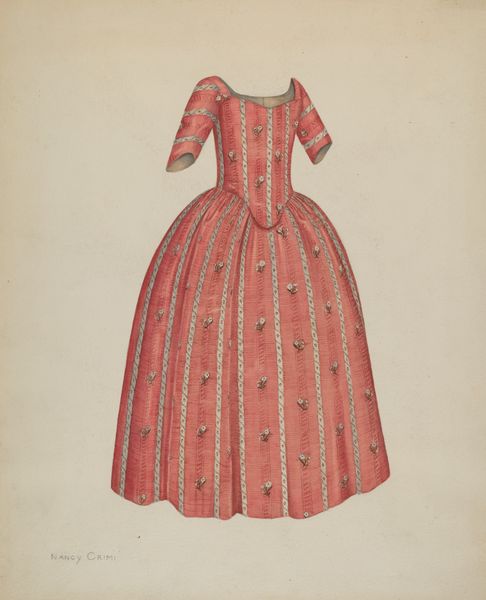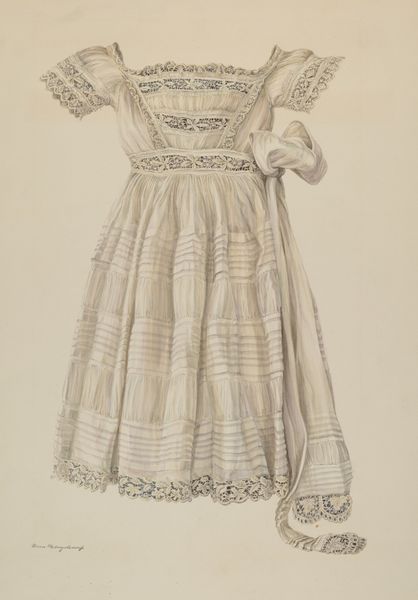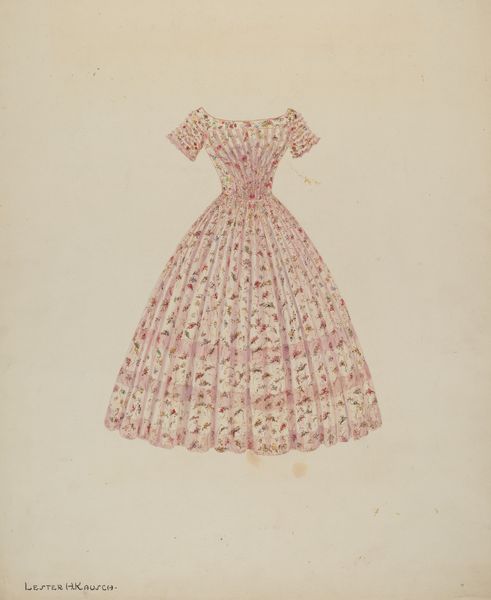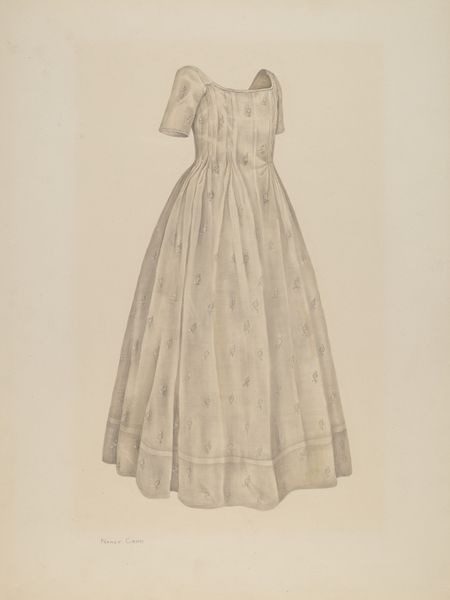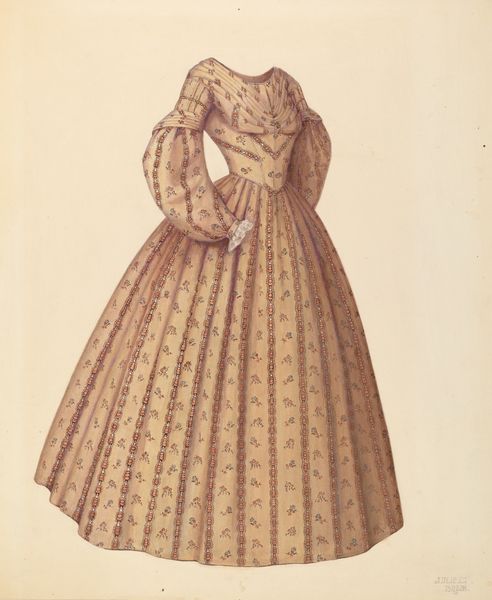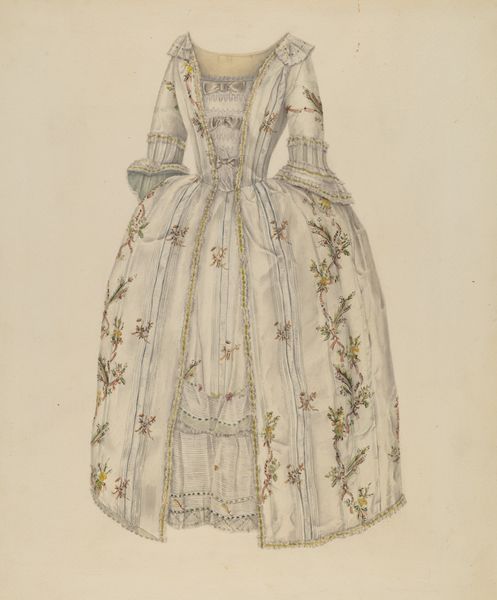
drawing, coloured-pencil
#
portrait
#
drawing
#
coloured-pencil
#
figuration
#
historical fashion
#
decorative-art
#
watercolor
#
clothing design
Dimensions: overall: 46 x 36.7 cm (18 1/8 x 14 7/16 in.) Original IAD Object: 28" long
Copyright: National Gallery of Art: CC0 1.0
Curator: This is "Girl's Dress," a drawing created by Nancy Crimi sometime between 1935 and 1942, rendered in colored pencil. Editor: It has a quaint elegance about it, almost doll-like in its perfection. The light fabric seems almost luminous, and the overall impression is very soft. Curator: Consider the period. Fashion designs such as this represented aspirational images for many women during the Depression. The care invested speaks to the cultural value placed on appearance and femininity despite widespread hardship. What does this dress tell us about idealized gender roles? Editor: For me, the rendering calls attention to the craft and skill involved in dressmaking during this time. I see seams, the texture implied in the sleeves— the attention to construction hints at labor, time, and process, all deeply intertwined with both making and class. Curator: Yes, the detail invites us to think about production, but it is equally fascinating when contextualized alongside discourses of childhood innocence and female domesticity that the image also reinforces. Consider the delicate floral pattern. How does that amplify existing gender constructs, or possibly challenge them? Editor: I am not convinced there is any implicit critique. But I do find it compelling to think about how accessible these kinds of design patterns were to women across classes via pattern books, magazines and other forms of domestic how-to. Crimi may be pointing toward a DIY culture that deserves recognition. Curator: Perhaps. The tension you pinpoint between personal expression and economic realities in design of this era—the interplay between labor, class, gender, and representation — continues to spark new readings and richer understandings. Editor: Absolutely. Studying it from the perspective of material history underscores how art becomes entwined with labor history, challenging hierarchical notions between what we define as high art and “mere” design. It prompts one to contemplate who gets remembered and how their efforts get framed.
Comments
No comments
Be the first to comment and join the conversation on the ultimate creative platform.
